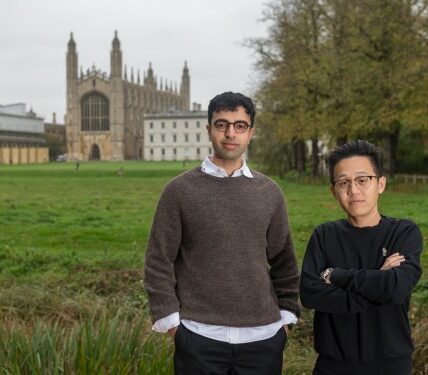Google DeepMind Unites Researchers in Bid to Create ImageNet Equivalent for Robot Actions
In the realm of robotics, there exists a holy grail that has long been sought after by researchers and engineers. This elusive goal is to create robots that can learn and adapt to various tasks and environments, much like humans do. However, with the abundance of specialized robots designed for specific purposes, it’s become increasingly challenging to envision how this transition will occur.
The Current State of Robotics
Most modern robots are built to excel in a single task or a limited set of tasks. This is evident from the lowest-end robot vacuum cleaners to high-end industrial systems. While these specialized robots have made significant strides, they are often limited by their inability to generalize and adapt to new situations.
The Need for General Purpose Robotics
To overcome this limitation, researchers and engineers must develop robots that can learn and adapt in a more general sense. This involves developing algorithms and architectures that allow robots to understand and respond to various instructions, perform complex tasks, and generalize effectively across different environments.
Robot Learning: The Key to General Purpose Robotics
The key to achieving general purpose robotics lies in the development of robot learning capabilities. Research labs, startups, and corporations are actively working on this issue, with many focusing on creating shared datasets and models that can be used to train robots.
Open X-Embodiment: A Shared Dataset for Robotics
Google’s DeepMind robotics team has made significant strides in this area with the creation of Open X-Embodiment. This massive dataset features over 500 skills, 150,000 tasks, and 22 different robot types. The researchers behind the project aim to create a platform that allows robots to learn from each other and enables researchers to share knowledge.
The Benefits of Open Sourcing
By making the data available to the research community, DeepMind hopes to accelerate progress in robotics. This open sourcing approach can help reduce barriers for researchers, enable collaboration, and ultimately lead to more efficient development of general purpose robots.
A Combination of Solutions Required
Creating a single silver bullet to solve this issue is unlikely. Instead, it will require the integration of multiple solutions, including shared datasets, model architectures, and learning algorithms. This multi-faceted approach will enable researchers to build more complex and capable systems that can generalize effectively across various environments.
Conclusion
The development of general purpose robotics requires a concerted effort from researchers, engineers, and industry leaders. By leveraging robot learning capabilities and creating shared datasets, we can begin to bridge the gap between specialized robots and truly general purpose systems. The journey will be long and arduous, but with the combined efforts of the research community, we may finally unlock the holy grail of robotics.
What Does This Mean for Industry Leaders?
For industry leaders and researchers, this development is crucial in several ways:
- Increased Efficiency: General purpose robots can automate tasks more efficiently than specialized systems, leading to cost savings and improved productivity.
- Improved Adaptability: With the ability to adapt to new situations, general purpose robots can respond better to changing environments and requirements.
- Enhanced Flexibility: These robots can be trained for various tasks without requiring significant reconfiguration or updates.
Industry Players Taking Note
Viam and Intrinsic are notable industry players working on lowering the bar of entry for robot programming. Their efforts highlight the growing recognition within the industry that robotics requires a more accessible and collaborative approach to development.
The Future of Robotics
As researchers and engineers continue to push the boundaries of what’s possible, we can expect significant advancements in general purpose robotics. The convergence of AI, machine learning, and robotics will likely propel us toward more complex and capable systems.
Timeline for General Purpose Robotics Development
While it’s difficult to predict an exact timeline for achieving general purpose robotics, several factors suggest that progress is accelerating:
- Increased Funding: Growing investment in robotics research and development is driving innovation.
- Advances in AI and Machine Learning: Breakthroughs in AI and machine learning are enabling the creation of more complex models and algorithms.
- Collaboration and Open Sourcing: The trend toward collaboration and open sourcing datasets is facilitating knowledge sharing and accelerating progress.
Challenges Ahead
While significant strides have been made, several challenges remain:
- Scalability: General purpose robots must be able to scale from small environments to large-scale industrial settings.
- Complexity: Developing algorithms that can handle complex tasks and adapt to new situations is a significant challenge.
- Interoperability: Ensuring seamless integration with existing systems and equipment will require coordination among industry players.
Conclusion
The holy grail of robotics – general purpose learning – is slowly becoming a reality. As researchers, engineers, and industry leaders continue to push the boundaries of what’s possible, we can expect significant advancements in the coming years.





